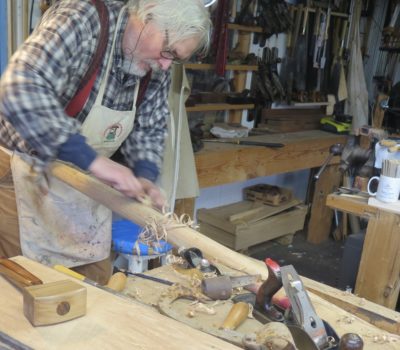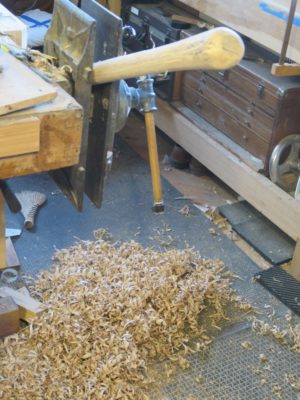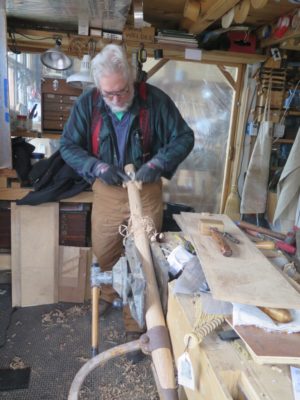Win-Win-Win
Last Spring while wandering around the woods above the barn I made a surprising discovery, the hook and tip from a logger’s cant hook, the tool used to turn and manipulate logs on the ground. I have no idea of the vintage nor heritage of these tool components, they were muddy and rusty but still beefy enough to be sound and perhaps reused. I’ve only been harvesting trees for less than a decade and these tool parts were certainly not mine; the previous log harvesting was four decades ago, long before I was on the scene.
I brought them back to the barn and stuck them in my “tool projects” box.
When I began setting-up to work firewood again a couple weeks ago in the aftermath of clearing the trees around the log barn, and not coincidentally opening the sky to provide copious sunshine for Mrs. Barn’s little orchard and garden adjacent to the stone wall, I recalled this earlier find. There was no handle remaining for the cant hook parts so I checked with the hardware store. They did not have anything suitable for use. Instead of ordering one I checked my lumber stash and Surprise! found the perfect scrap of vintage white oak to make a new handle. The rough stock was no account, having the live-edge running the full length of the narrow 10/4 board that I probably saved because I could not bring myself to throw away a piece of wood that “could be used for some project, some time.” Happily that time had come.
Even though I already had two log-handling tools, one a standard cant hook to roll a log over, the other a timberjack to roll the log over and lift it up off the ground for easier chainsawing, I decided to make a new handle for the cant hook parts and thus have one in reserve. Adding to the tool inventory is pretty much always an irresistible enticement.


I sawed out the blank for the handle and set to working on it, starting with the tapered end to match the metal fittings. A drawknife, spokeshave and rasp accomplished this in short order. Then I just started wailing away on the blank to make it rounded and swelled or tapered as needed for comfortable use. The hours spent with hand tools, working hard and even working up a good sweat in so doing, goes in the WIN column in my book. In a couple of hours, with my hands and arms tired from the exertion, the handle began to take shape. Actually I was working the metal spokeshave so vigorously that I had to wear gloves to protect my hands from the heat of friction. No kidding. Even with a sharp blade and a waxed sole the tool got really hot.

As I was extracting the desired handle shape from the rough stock the pile of long, sinuous shavings grew repeatedly underfoot. In their own way detritus like this (and from rendering Gragg chair parts) is treasured in our little Shangri-la as it provides perfect tinder for rejuvenating the wood stove every morning. Being an early-riser Mrs. Barn relishes being able to deposit a handful of these shavings on the bed of coals from the overnight fire along with some kindling and gets the fire going in just a minute or two while she sits and reads with a cup of tea as the sun is coming up.

Put another check mark in the WIN column.

As I approached the final shape and size of the new handle I affixed the hook and serrated tip on it so I could actually hold it and mock-use it to get the size and shape just the way I wanted it. A few more minutes of shaving a bit here, a smidge there, and it was ready to be put to work. The only thing left was to paint the handle fluorescent orange like the rest of my woodlot tools (to find them much easier on the work site).

A vintage tool rehabilitated and added to the working inventory of the barn without having to reach for my wallet? A big WIN.
So, an ordinary discovery deep in the woods yields a Win, Win, Win opportunity.


Join the Conversation!